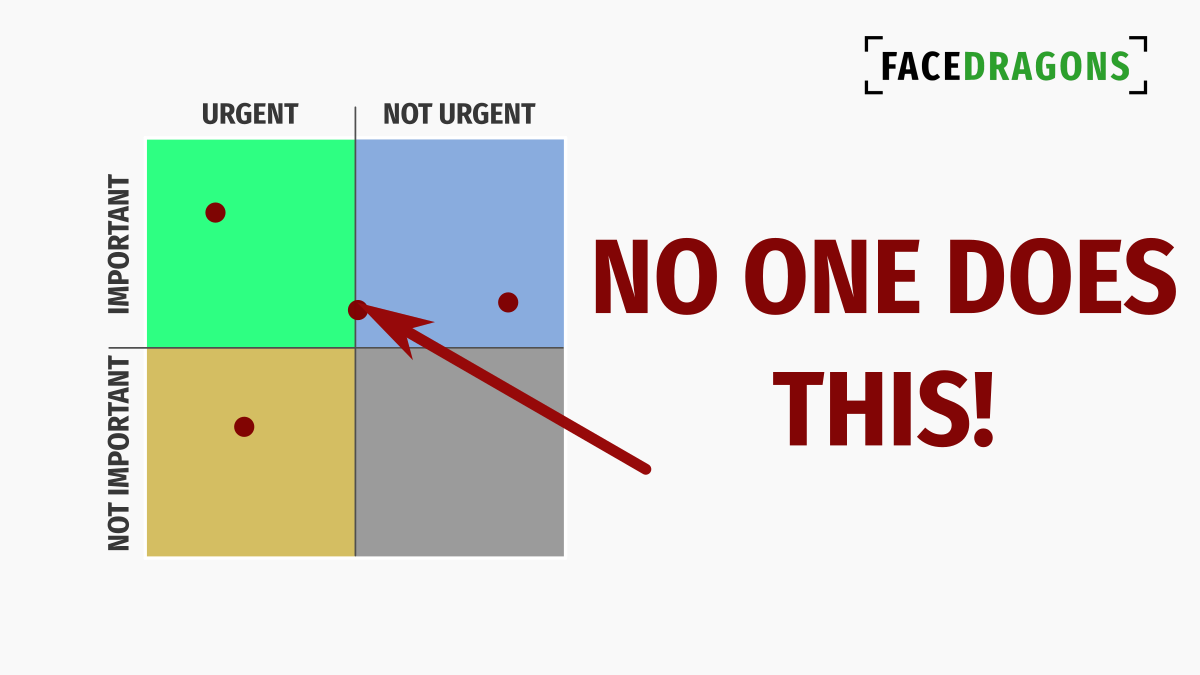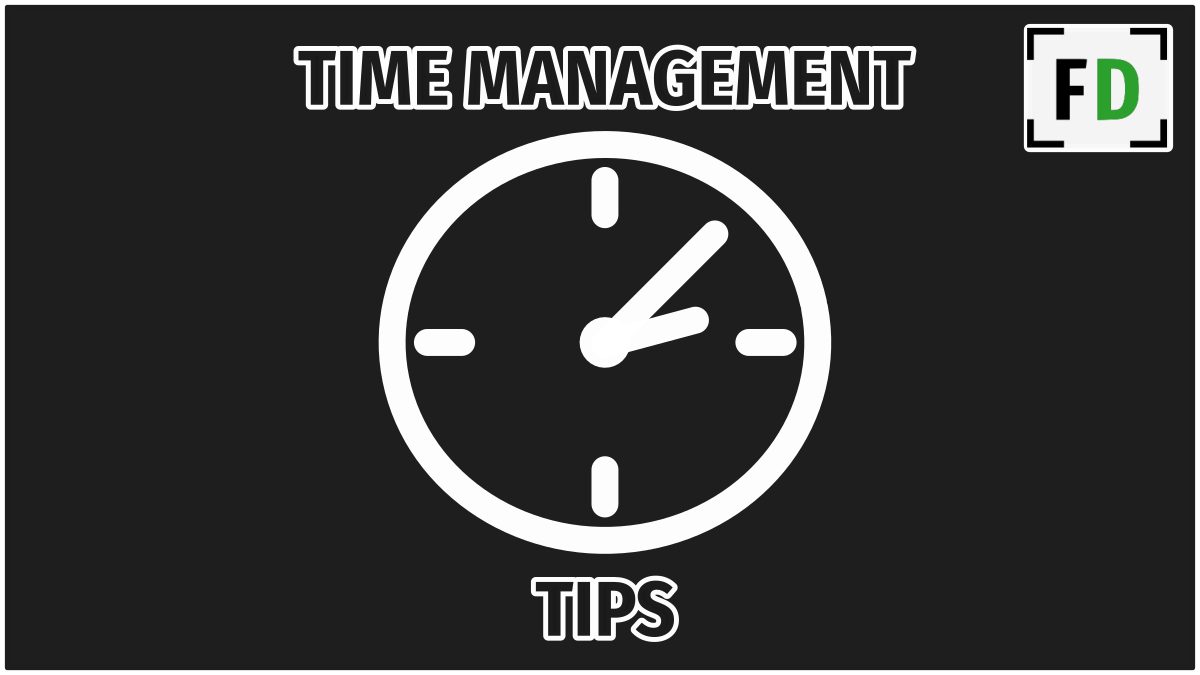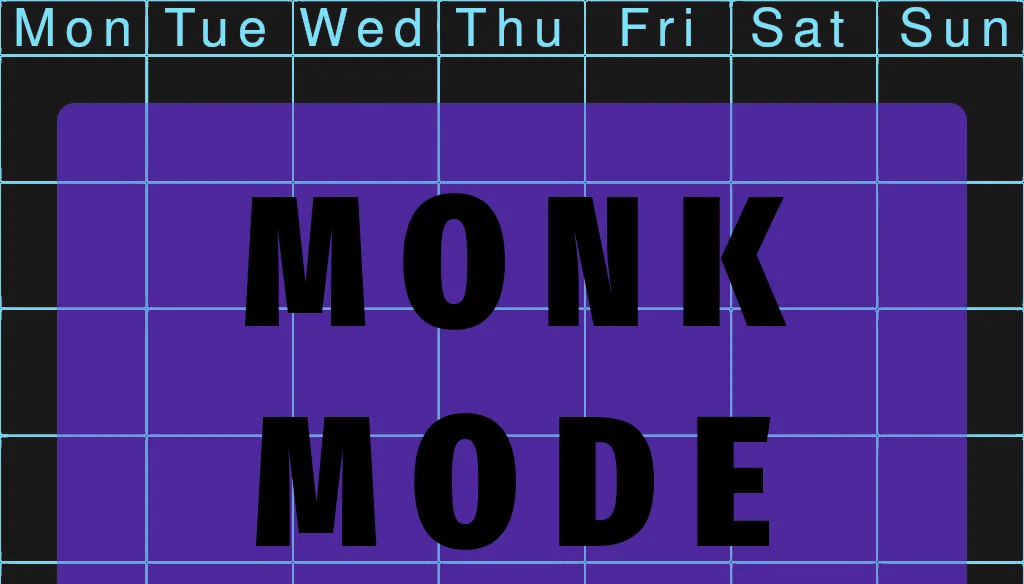These time management tips are like power tools in your garage. You might not need them every day, but when you have things to do, they’re there. Every man collects more responsibilities as he goes through life, placing more pressure on both him and his time. Don’t let that pressure break you! Instead, learn to manage your time and consistently get things done in every area of your life.
If you feel like the pressure is starting to get to you, or if you just want to become even more productive, these time management skills will help you avoid overwhelm and keep you productive.
1. Prioritize: The Key to Effective Time Management

The greatest time management tip you can follow is to prioritize your tasks correctly.
“My research has found that 20 percent of U.S. men and women are chronic procrastinators. They delay at home, work, school and in relationships. These 20 percent make procrastination their way of life.”
Joseph Ferrari, PhD, Professor at DePaul University in Chicago
A much larger percentage of people fall into the “occasional procrastinator” group, but there is something you can do to avoid it—prioritize your tasks.
Everyone knows the feeling of spending an hour scrolling through social media and then realizing that you could have been doing something you actually care about. That pang of guilt is made much worse if you can’t quite put your finger on what you should have been doing instead, though. It’s like, “I’m wasting my time, but I don’t even know what I should be doing.”
Prioritization is the answer.
Various strategies and techniques help you prioritize your projects and tasks.
- The Eisenhower matrix says to plot your tasks within one of four quadrants depending on how urgent or important it is.
- The MoSCoW method makes you decide between must-haves, should-haves, could-haves, and won’t-haves.
- Even Maslow’s hierarchy of needs can help you distinguish your true priorities.
Let’s be honest, though. You don’t need any of these methods.
No one is creating an Eisenhower matrix to decide whether to write that email or finish their report. Don’t waste your time prioritizing when it’s already done for you.
Your brain already knows what is important (it’s the one that tells you where everything goes on the matrix). So ask it.
If you ask yourself, “Should I watch a whole series of Xena Warrior Princess this evening?” Your brain will be like, “No, you need to finish the presentation for tomorrow morning, and you have that book you said you’d read!” Your brain will also tell you you can read the book later, but you must do the presentation now.
The only real problems relying on your brain to prioritize for you are:
- When you don’t listen to it
- When you don’t know what you have to do
I can’t help you with number one. You need to build some discipline. But keeping a list of everything you want to get done is the best way to help your brain prioritize.
If you glance at your list of tasks quickly, your brain will immediately tell you which one you should do first.
2. Choose the Right Time for the Right Task
It’s called time management for a reason. No, you can’t manage 10 minutes and come up with 30, but you can do the right tasks at the right time.
- Does a lunchtime workout destroy your energy for the rest of the day?
- Do you only feel creative in the morning?
- Do you try to read before bed and always fall asleep before finishing a page or two?
You can focus for three hours straight in the morning, but don’t think that means you could do that late at night. Your energy levels change throughout the day, so you should time your tasks to ensure you’re at peak performance for your most intensive tasks.
I write in the mornings (it’s 10.30 am right now). I can write two first drafts each morning (usually about 2000 words.) After lunch, I struggle to write 500. So I must do something else in the afternoon, I shouldn’t waste my time trying to write when the times not right.
I have no trouble taking photos, posting to social media, or doing research in the afternoon, though. After working out, I’m usually too drained to do any of that stuff so I hit the gym in the evening. Simple.
Figure out when you do your best work. Just don’t make the mistake of thinking you can work to the same level at any time of the day. You can’t. If I did my research in the morning and tried to write in the afternoon, I’d be four times less productive.
3. Make a List Everyday
I’ve been talking about a daily to-do list for years, and I recently found a drawer full of them that I’d ripped out of my planner years ago.
- If a lack of focus is your problem
- If you’re never sure what you should do today
- Or if you struggle to prioritize your tasks
A daily to-do list is the answer. Here’s the simplest way to do it.
- Look through your complete task list (you have a complete list of actions you need to take, right?)
- Decide on three things you must do today
- Write your three most important tasks on your list
- That’s it.
It’s stupidly simple. As someone who has used GTD for nearly 20 years, who’s built task management and productivity software, and writes about it for a living, I never have more productive days than when I make a simple daily to-do list.
No matter what happens, that list will judge you until you check everything off. “Should I go to lunch early?” “No, I wanna check off the first item first.” “It’s 7 pm, time to hit the couch and open a beer.” “Nope! You still have one thing left on your list!”
Here’s today’s daily list.

4. Park Your Projects Somewhere
A task is just a task. You do it, you check it off, and you move on to something else. But a project is something different. Projects take time, they take multiple steps, and you might not even be completely sure when you’ve finished one.
As your life becomes more complex, so too does the number of projects you have. You no longer need to just “write the essay” or “clean my room.” Now, you need to “build a competent and well-trained sales team,” “launch the new product to the NA market,” or “plan the wedding.” These are complex and multifaceted and require continued management and engagement.
According to David Allen, the average person has between 10 and 100 projects. Keeping up to date with that many projects will be tough, but actually staying engaged and fostering progress on all those projects at the same time requires some skill.
The first thing you need is a project list.
A staple of GTD since the beginning, a project list is a highly underrated time management tool. When a new project lands on your lap, what do you do? If you’re like most people, you say to yourself, “I’ll deal with that later; I’ve gotta get this task done now.” Weeks can pass until you finally recall that you were supposed to be working on that new project.
When a big project enters your world, you need somewhere to put it—somewhere you know you’ll see it later—your projects list.
The list doesn’t need to be any more complicated than a note on your phone titled “Projects.” Every time you become responsible for a project, just jot it down on your list.
Every week or so, look the list over. Projects will jump out at you, saying, “Don’t forget about me!”
5. Keep a Not Now List
Someone tells you about an excellent new book you should read. You already have a stack of books on your bedside table with no hope of getting through them anytime soon. What do you do?
You want to avoid putting the recommended book on your task list and must scroll past it daily for the next year.
Make a “Not Now” list. In Getting Things Done, this is called a Someday Maybe list, but I don’t like that term. I have a list of someday-maybes, but I stopped using it after it grew past 400 items. Realistically, I’m not going to do any of them. So, I created a “Not Now” list.
The difference? The Someday Maybe list is full of things I might do, maybe. But the “Not Now” list only has stuff I really want to do, just not now. I will get around to doing them, just not now.
Every few months, I’ll look through my not-now list and add a few things to my regular list.
This list helps me track what I want to achieve without clogging up my day-to-day system.
6. David Allen’s Two-Minute Rule: The Greatest Time Management Tip Ever?
If you don’t know who David Allen is or what the two-minute rule is, get his book now!
The two-minute rule is pretty simple, but it’s one of the best time management tips you’ll ever find. “If something takes two minutes or less to do, don’t put it off, do it now.“
Don’t skip over this productivity tip. It’ll save you time and stress. Imagine a world where none of those annoying little tasks exist because you’ve already done them. That’s the promise of the two-minute rule.
7. Make a Not-to-Do List (and put time wasters on it)
Learning to say no is tricky. It feels awkward, and sometimes you’d rather waste your time than have to say it. You need two things:
- A not-to-do list
- A good reason
Your not-to-do list should include all the things you think are a waste of time, like Instagram and watching old World of Warcraft videos on YouTube (remember Leon Jenkins in UBRS?)., but you should also include the things other people ask you to do that you just shouldn’t be doing.
For example, when that colleague comes over to your desk on Friday afternoon with some question about something that isn’t your job, You’re a nice guy, so you Google it and tell him what you found.
Let him Google it himself.
Put it on your not-to-do list so that next time he wanders over, you know you’re not supposed to do his work for him.
Now, you just need a good reason. This part is simple; it’s number three above—your daily list. “Sorry, Jeb. I still have two things I need to get done today. Why don’t you try Googling it?”
8. Build Effective Systems to Save You Time
- How many rules have you set up in your email inbox? If the answer is none, you’re wasting time on email.
- Have you automated the backup of your photos? If the answer is no, how much time and energy will you waste when the cloud has no more free space or you lose your phone?
- How tight is your workout programming? Do you know what you’ll be doing in the gym for the next three months?
- Have you set up an easy-to-follow habit to achieve your latest personal goal? Like playing piano, learning French, or juggling five clubs
You’ve heard it before, but it’s worth repeating systems beat motivation every time. It’s not the guy who falls in love with the language and spends 10 hours a day practicing for a week who masters it. It’s the guy who creates a system and spends an hour a day practicing for life.
Systems don’t need to be complicated or perfect. They just require a little forethought:
- When will I do this?
- What’s the goal?
- What do I need to do now to move toward the goal?
- What would I need to do in the future to continue progressing toward the goal?
Answer these questions, and you have a system.
Then, you need the discipline to show up and work the system.
Take Your Time Management Skills to the Next Level
Want to level up and really start outperforming everyone around you? Join the Dragon’s Eye.
Meet Gregory, a writer and the brains behind Face Dragons. He's the go-to guy for getting things done.
Gregory's been living the digital nomad life in Asia for as long as anyone can remember, helping clients smash their goals. He writes on topics like software, personal knowledge management (PKM), and personal development. When he's not writing, you'll catch him at the local MMA gym, nose buried in a book, or just chilling with the family.









